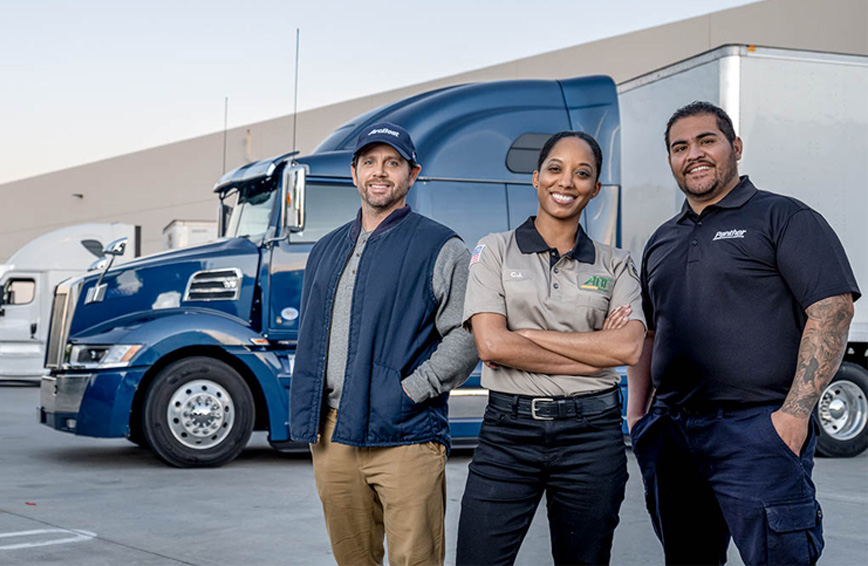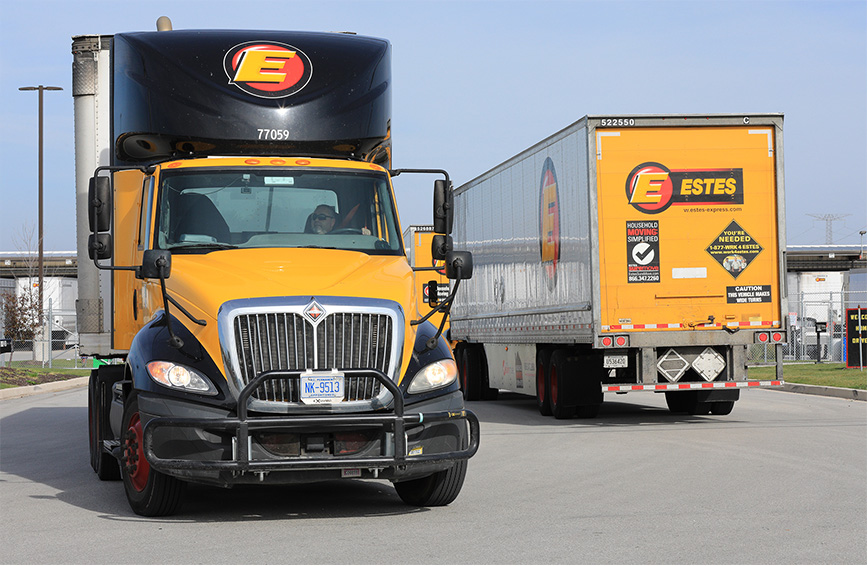Augmented intelligence is what happens when humans embrace the power of artificial intelligence (AI). This partnership has the potential to unlock productivity gains trucking has never seen before.
To better understand the opportunities, we first must define augmented intelligence and then ensure we're thinking about the term correctly.
What is augmented intelligence?
Augmented intelligence is the practice of enhancing a human's capabilities with the aid of AI. Combining the best parts of people with the best parts of AI empowers people to do far more than possible on their own.
Some people worry that AI will replace humans and make them obsolete. But humans benefit when they learn to embrace AI rather than push it away.
The longer humans engage in repetitive, mind-numbing tasks, the greater their chances of making silly errors. But these tasks are where AI thrives. When used correctly, AI automates mundane tasks so that you can focus on higher-value work. This symbiotic relationship lets the best parts of AI and humans shine.
Augmented intelligence does not replace humans; it instead enhances humans.
Other terms for augmented intelligence include:
- Decision support.
- Intelligence augmentation.
- Cognitive augmentation.
- Machine augmented intelligence.
- Enhanced intelligence.
- Human augmentation.
Note: To keep this post simple and clear, we will stick with "augmented intelligence."
Examples of augmented intelligence
While the term may sound new, examples of augmented intelligence in everyday life include:
- Banking fraud alerts
- Cybersecurity and phishing solutions
- Spell check
Even truckers are more familiar with augmented intelligence than they may realize through technology such as:
- GPS
- Collision detection
- ELDs
- Truck dispatching software
In each example above, the machine reports the possibility of an error–or suggests the best path. But the human is still in control, and they decide what action to take–or whether to take any action at all.
You need a basic understanding of writing and grammar to know when spell check is making the proper edits. And a GPS will sometimes tell you to take an exit closed for construction, because it still needs to be updated with the latest information. So humans still have to rely on old-fashioned common sense, something machines will never have.
Augmented intelligence vs. AI
When you get down to it, artificial intelligence is a machine doing math. A machine performs a series of calculations with numerous variables, which would be repetitive and time-consuming for a human. But AI does the math much faster than a human can.
AI is helpful only once it augments (improves) human decision-making. Augmented intelligence builds upon AI. A person looks at the results of the calculations made with AI and then makes a decision about what to do with the results.
AI will not replace humans; it will enhance them
AI has little to no value without human input.
AI struggles when faced with uncertainty. Because it relies exclusively on the data provided, AI does poorly in situations it's not programmed for. But humans must deal with uncertainty daily.
AI and augmented intelligence need quality data to be effective. Humans can provide this data either manually or by setting up software integrations. Machines and algorithms then work with the supplied data. But humans ultimately decide what to do with the data.
Artificial intelligence can draw connections between data that humans can't. But only a human can determine the value of those connections. While AI can reveal new insights for humans, only humans have the instincts to make the right decisions for their businesses. And so, quality decisions require quality humans.
The process begins with the human providing AI with data. The AI calculates and then offers options to the human, who picks the best path forward. When adopting augmented intelligence, getting back up to speed as you change habits and processes can take a while. But your momentum is hard to stop once you get into a rhythm.
Who does augmented intelligence NOT benefit?
Augmented intelligence doesn't benefit anyone who enjoys hiding behind busy work. It's not ideal for those who want to do things the way they've always been done.
But it benefits anyone wanting to be more productive.
How does Optym use augmented intelligence to help trucking?
AI and augmented intelligence make up the backbone of all of Optym's solutions.
Below are a few examples of how we use these technologies in our software.
Smart routing
Carriers handling multi-stop deliveries have a tough job. They have to consider a long list of requirements that must be satisfied to deliver a successful load.
Requirements these carriers must satisfy include:
- Vehicle capacities
- Shipment sizes
- Customer time windows
- Driver availability
- Geography
And each requirement added to the job makes the job exponentially more difficult to complete.
Delivering even what appears to be a simple set of stops can be done in thousands of different ways. You only have time to calculate some of those routes and possibilities. But AI-powered solutions have the time–this work is precisely what they're made for.
In a fraction of the time you need, AI can crunch the numbers and report back only a handful of the best options. Then you decide which route to take.
That's augmented intelligence in action.
Smart loading
The challenges of smart loading are related to smart routing, as mentioned above.
Once you've found the route that makes the most sense, you must load your truck to complement your route. The more stops you have, the more loads you have to organize.
Also, carrying various load types can increase the risk of compliance issues. Maybe one kind of load can't be near another. This situation is another example of a function better outsourced to a machine that will stay calm when juggling all these requirements.
And as a bonus, AI can tell you which safety placards you need to display on your truck. This is just one less thing you need to worry about.
Track and trace
When drivers are navigating crazy traffic and doing all they can to deliver their loads on time, the last thing they want is a phone call from someone asking where they are.
We have solutions that, with the proper integrations, already know where you are. And those solutions can communicate your status to all interested parties with automated track and trace links. This is another example of how AI adds convenience and makes you safer by freeing you up to focus on the road and the job ahead.
A future with augmented intelligence
The future is coming, whether we like it or not. In so many ways, it's already here.
AI will always rely on humans. And so that's why humans, whether in trucking or any other industry, should not be afraid to rely on AI.
In the augmented intelligence relationship, humans do not give control to AI. They still make the ultimate decisions and are still in control of their fate. But they now have more and better tools to work with to hit new heights that were once out of reach.
Learn more how augmented intelligence can help truck dispatchers.




-2.jpg)